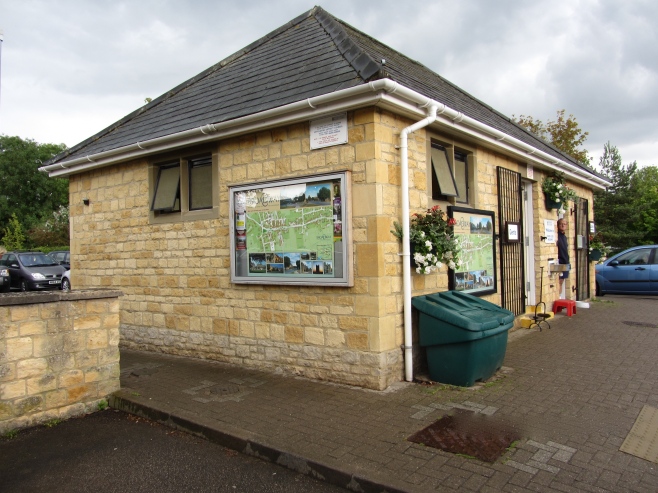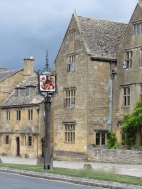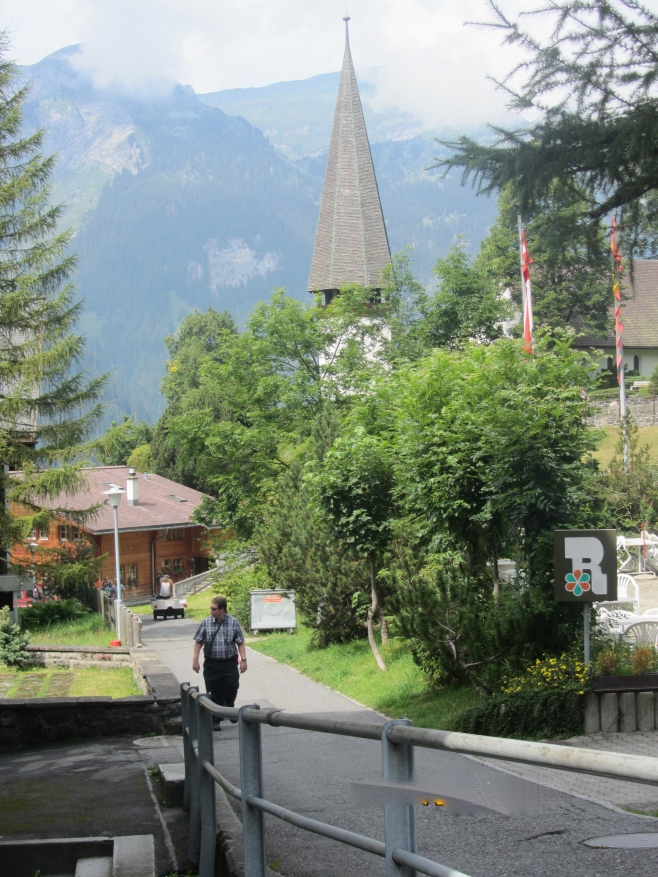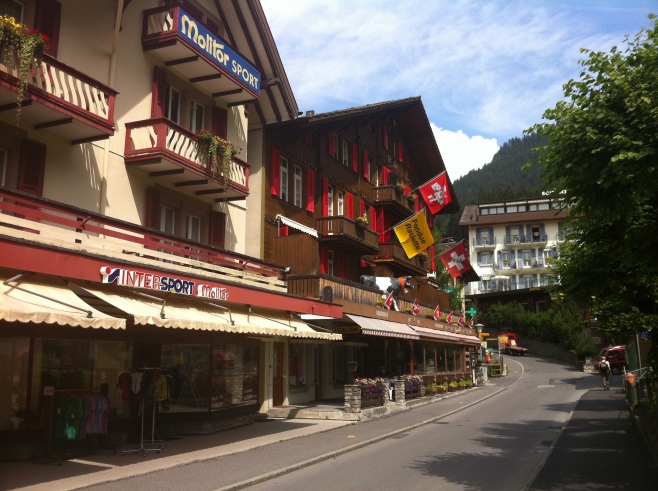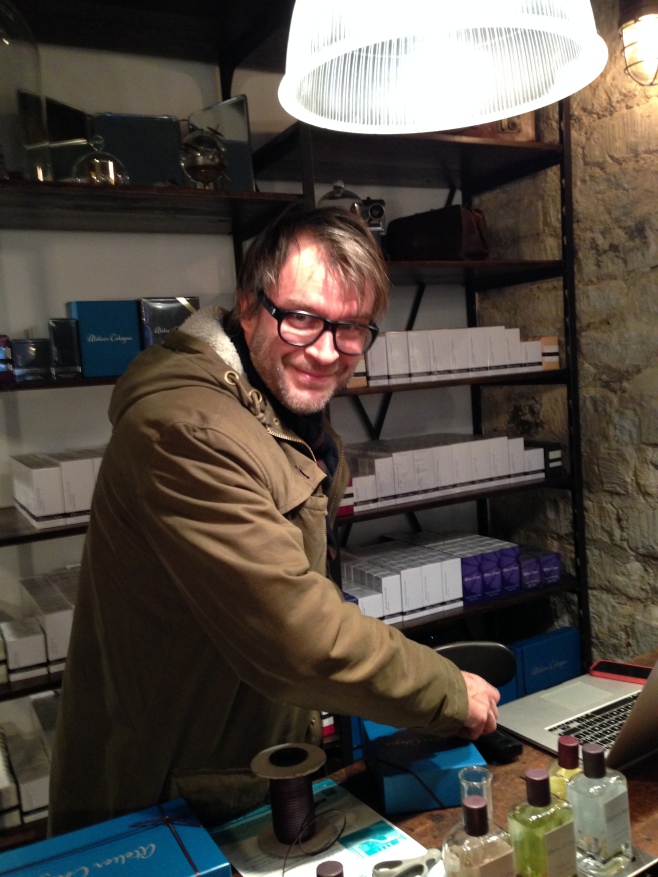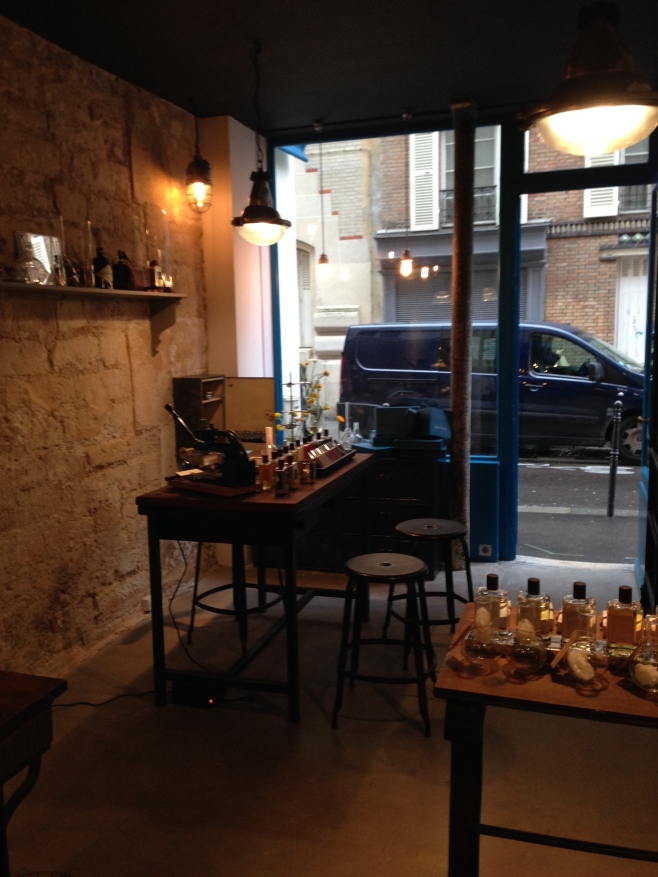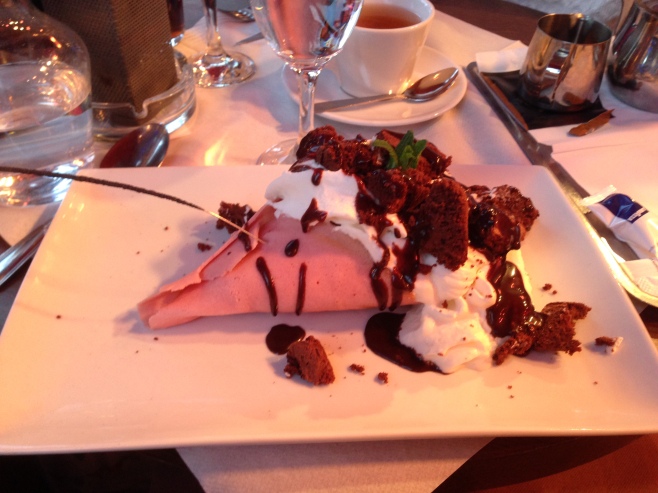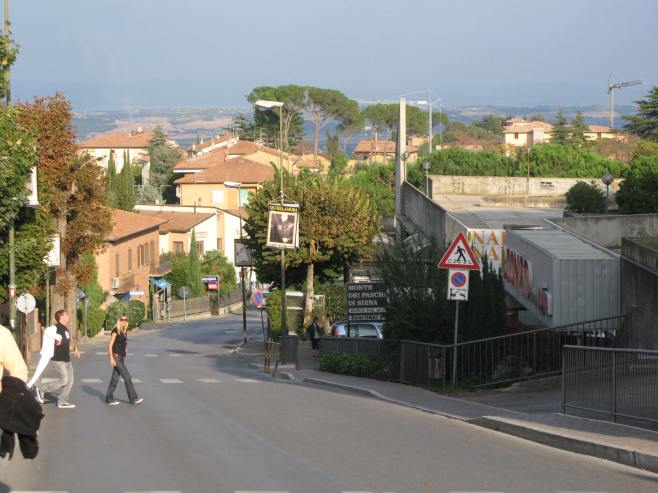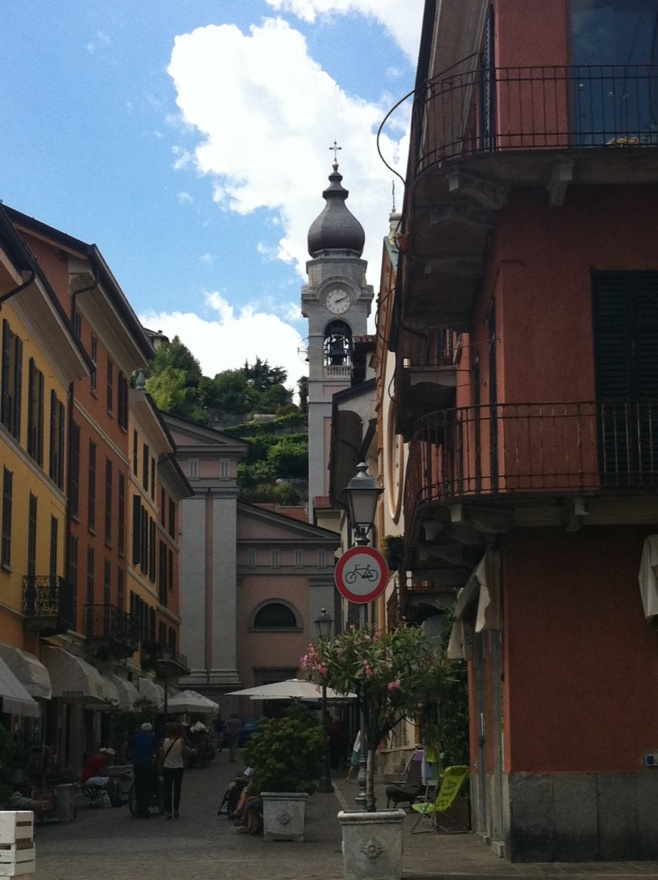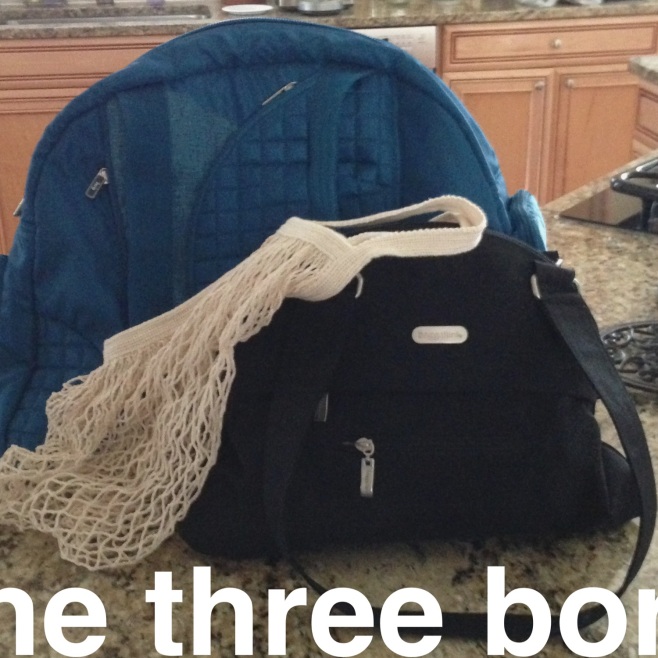
San Bartolomeo by Marco d’Agrate
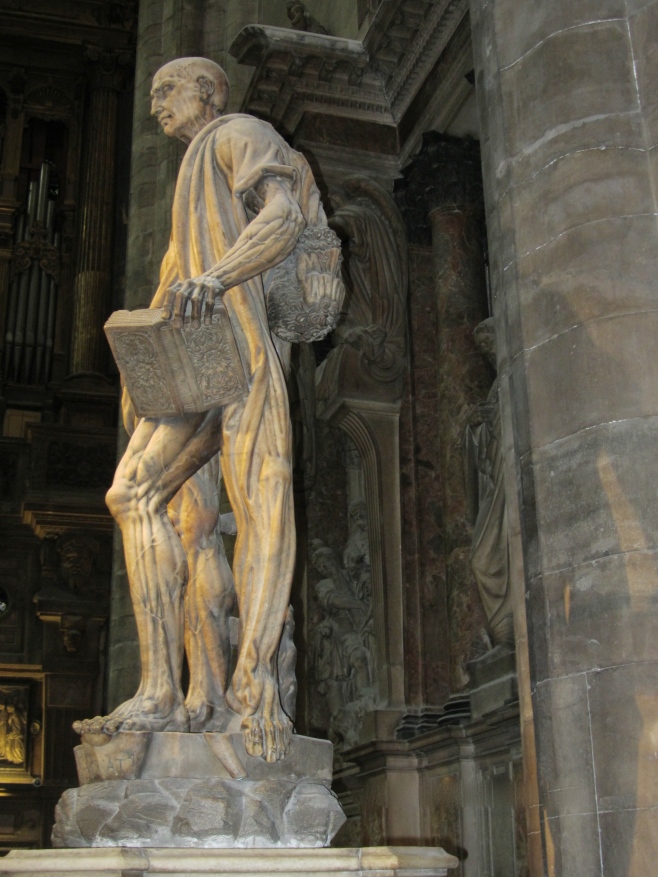
We are on the early morning commuter train from Varenna to Milan. We are meeting up with a private local guide, Lorenza Scorti, who knows the city’s history well. We have marked off certain sights we would like to see. We are hoping Lorenza has been able to get us tickets to get into the Church of Santa Maria delle Grazie, where Leonardo da Vinci’s masterpiece, the Last Supper, is housed. One of the leading families of Italy during the Renaissance, the Sforza Family of Milan, hired da Vinci to decorate the dining hall of the Dominican monastery that adjoins the church. Ultimately, the Sforza family was bribing the monks with this gift so the monks would allow their family tomb to be placed in the church.(Which never happened) The fresco began deteriorating within six years of it’s completion due to the experimental technique used by Leonardo. Bombing during WWII left only one wall standing in the church. The wall of the Last Supper. Truly a miracle! In 1999 a 21-year restoration project was completed peeling away 500 years of touch-ups, leaving the masterpiece intact.
Lorenza meets us at the central train station and after going up several escalators in the fashionable shopping area of the train station, Lorenza buys tickets for the metro and we are off! It is early morning and the streets are quiet. First stop, the Duomo, with a forest of spires on its roof, is the fourth largest church in Europe, after the Vatican’s, London’s, and Seville’s. The church was built with Pink Candoglia marble, rafted in from a quarry 60 miles away. We went past this quarry on the train when we went to Cinque Terre. Marble is still extracted from the sight. Inside the church is a beautiful marble mosaic floor and looking up we see The Quadroni, (large paintings on canvas, each about 20 by 26 feet) depicting the life of St Charles Borremeo. The paintings have been brought out and displayed for a special anniversary in the church. The 1st cycle of paintings (starting in 1602), The Facts of Life of Blessed Charles, consists of 28 paintings depicting his life, and were painted by seven different artists. The 2nd cycle, The Miracles of St Charles, consisting of 24 smaller paintings of his miraculous works and healings, were all painted between December 1609 and November 1, 1610, when Charles was canonized. These paintings were displayed for the first time together on November 4, 1610, when the paintings of his miracles could be shown after he had been declared a saint. Now they are only displayed on special days in the church and we were fortunate to be able to see them.

The Duomo

An impressive, detailed statue of San Bartolomeo Flayed (1562), by Marco d’ Agrate, is upfront and center in the church. That is his skin draped over his shoulder!
After the church, we are delighted to be shown a small museum in a private palazzo. I have wanted to see what was behind those big oak doors! Following Lorenza, we are lead through an intricate laid marble entryway and up the stairs to the private apartments. Today there are collections of clothing, shoes and those little bitty one woman carriage/carriers that were lifted on the shoulders of servants to whisk one about town and prevent your dress and shoes from being soiled. Boy were those women TINY! On the outside of the palazzo is a beautiful fresco above the rim of the windows. (See the video I made)

The Palazzo

Inside the Palazzo
Next, we walk to the La Scala Opera House and museum, the world’s most prestigious opera house! All that red velvet! Following that we head to the Galleria Vittorio Emanuele, a four story glass domed arcade on the main square, featuring all the Italian high end shopping stores and great for people watching as well. It was the first building in Milan to have electric lighting! Oh how Italians love fashion! Around the center dome patriotic mosaics symbolize the four major continents and the mosaic marbled floor reveals the city’s symbol, a torino. (little bull) Here locals step and twirl on the bull for good luck.

Inside the Galleria
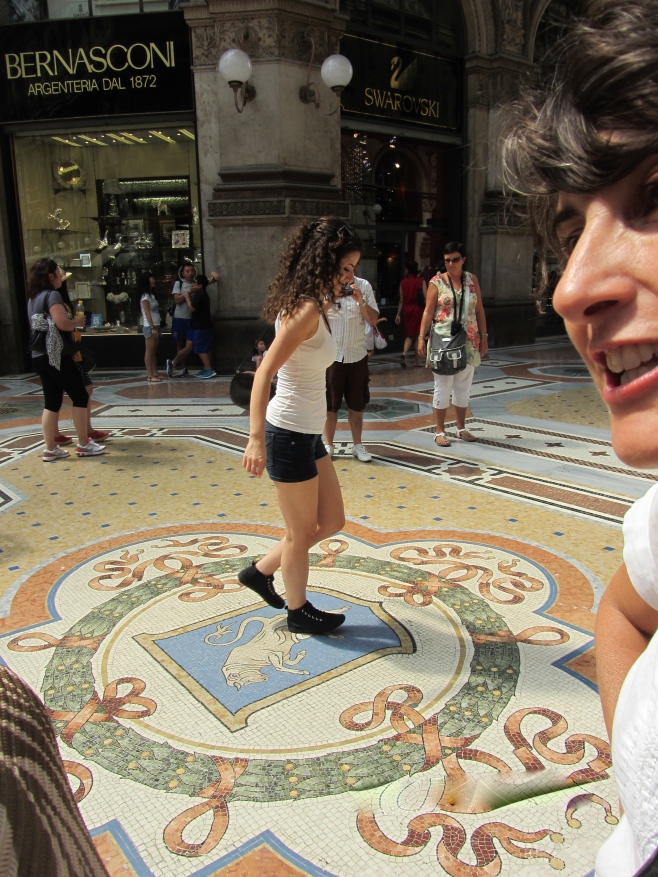
Il Torino
We go to a local pizza restaurant and I am so glad to sit. The one person pizzas are HUGE (enough for three people) and we wash it down with good red wine.
Afterwards, we make our way to the Sforza Castle, previously the residence of the Sforza family. It is now a museum of ancient art which features the last and unfinished Pietà, by Michelangelo and the Sala della Asse, frescoed by Leonardo da Vinci, who worked for the Sforza family as a painter, sculptor, and hydrologic engineer. Seventeen layers of whitewash are slowing being removed to reveal the entire mural by da Vinci, sections having been discovered on the walls as late as 2013.

The Sforza Castle

The Last Pietà
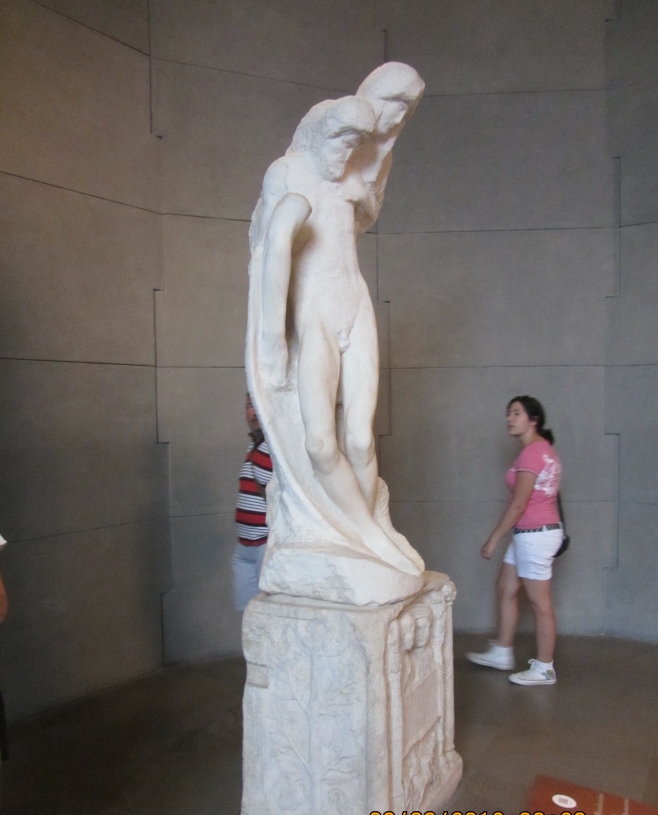
The Last Pietà

Our last stop of the day is Santa Maria della Grazie Church and we are thrilled to find admittance tickets waiting for us! The church is now hermetically sealed, so you go through sections of air filter stations, filtering the air from the outside, until it is deemed pollutant free and we are admitted. At last, a group of twenty, is turned out into the refectory for 15 minutes at a time. In the Convent, where the work on the end wall was started in 1495, the mural, measuring 180 inches by 350 inches, represents the scene of the Last Supper of Jesus with his disciples. Completed in 1498, the mural specifically portrays the reaction given by each apostle when Jesus said one of them would betray Him. Working a new technique, dry plaster rather than wet, and choosing to seal the stone wall with a layer of pitch, gesso and mastic, da Vinci painted the sealing layer with tempera. Due to this method the piece began to deteriorate a few years after he finished it. As early as 1517, the painting was starting to flake and by 1556 it was deemed “ruined” and so deteriorated, the figures were unrecognizable. In 1652, a doorway was cut through the painting, so the monks could get to the kitchens easier. This door was later bricked up, but can still be seen as an irregular arch shaped structure near the center base of the painting. In 1768, a curtain was hung over the painting to protect it; but instead it trapped moisture on the painting’s surface and whenever the curtain was pulled back, it scratched the flaking paint. In 1821, Stefano Barezzi, an expert in removing whole frescoes from their walls intact, badly damaged the center section of the mural before realizing the work was not a fresco.(Painted on wet walls) He then attempted to reattach the damaged sections with GLUE. From 1901 to 1908, Luigi Cavenaghi completed a thorough study of the structure of the painting, then began cleaning it. On August 15, 1943, the refectory was struck by a bomb, but a protective structure of sandbags and an additional wall in front of the painting protected it from bomb splinters. Pictures of the damage to the church line the walls upon leaving. It was the only wall left standing. We leave Milan and return to Menaggio by train and then ferry, weary but so thankful we have been able to see some of the greatest art in the world.
For more information on a private tour of Milan contact Lorenza Scorti at lorenza.scorti@libero.it
0.000000
0.000000







